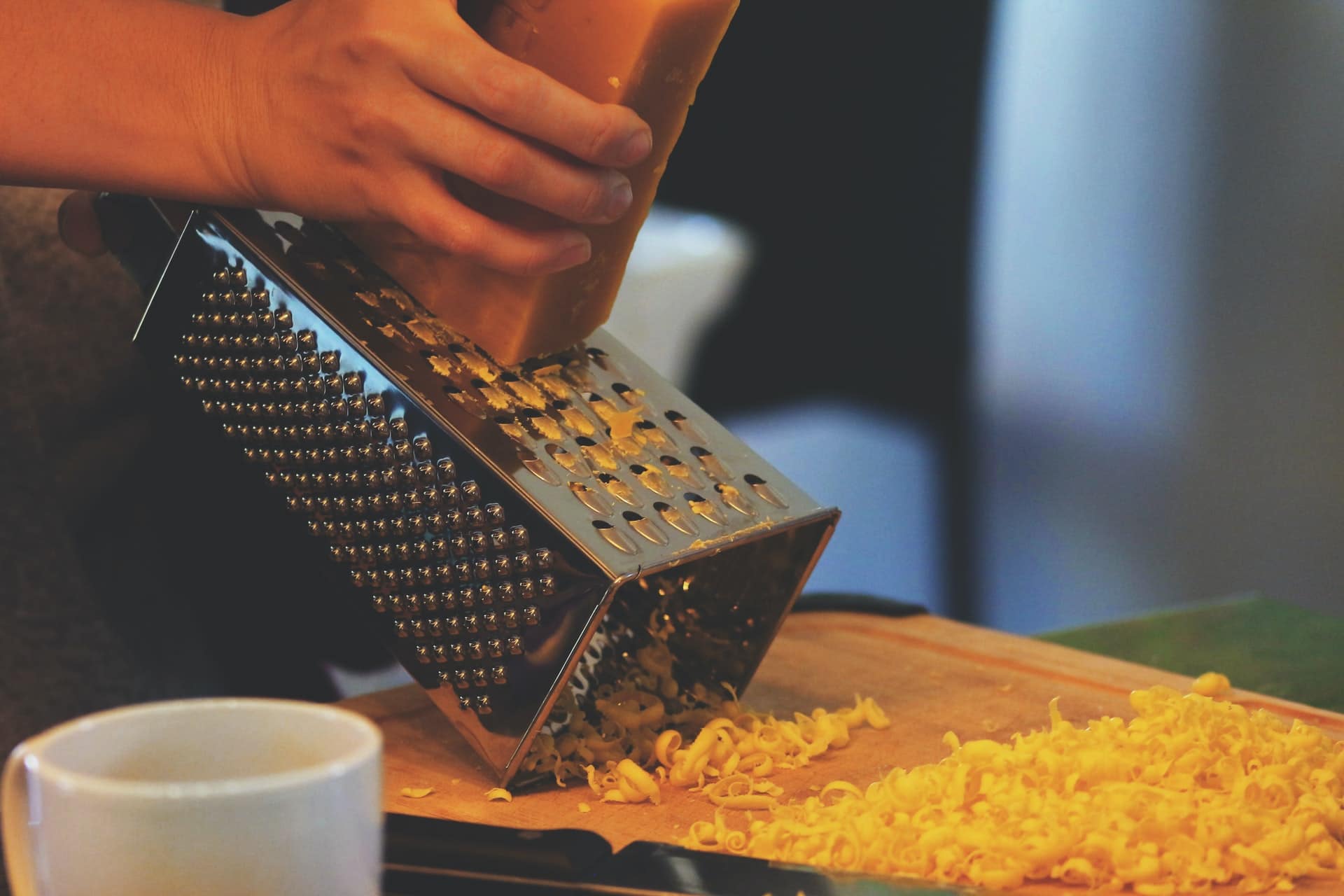How to Clean a Cheese Grater?
Have you been thinking of how to clean the Farberware cheese grater, then you’re in luck because today’s blog is all about getting those bits of cheese out of your favorite cheese graters – including your dependable stainless steel cheese grater.
Can you put a cheese grater in the dishwasher?
This is a common question that gets people into a twist. The general answer to this is that it is not advisable to put any freshly used cheese grater into a dishwasher. This is quite simple: cheese graters tend to have many leftover cheese bits in the grater holes.
The leftover cheese is normally still there if you leave the cheese grate in the dishwasher. The dishwasher won’t be harmed, but do you want to use a cheese grater with bits of dried up cheese (with a bonus of dish soap) the next time you make pasta? We don’t think so!
How to hand wash a grater? How do you clean a box grater and a parmesan grater?
Hand-washing a grater is the best way to clean graters. You will have more control of the cleaning process, and you will be able to monitor the removal of the bits of cheese from the small holes of the grater. All kinds of graters follow the same design.
The difference is in the size of the holes. Generally speaking, the smaller the holes of the cheese grater, the harder it would be to remove all the leftover cheese completely.
So whether you are rocking a regular hand-held cheese grater or a box grater with several sides, or a specialized parmesan grater, expect to encounter the same problems repeatedly with leftover cheese.
The best time to clean all kinds of cheese graters is right after you use them. It would be helpful if you did not let your graters pile up in the sink like your other kitchen utensils and dishes. The faster you can get to cleaning your graters, the easier it would be to remove all the leftover cheese.
The reason for this is that the cheese begins to harden as the environment takes out all of the moisture. The harder the cheese becomes, the more complicated it would be to remove the bits of cheese. And this is the only concern that home cooks have when cleaning their graters in the first place.
What if you want to use your dishwasher to clean your cheese grater? There is a “hack” that might work if you do it correctly. First, you need to get all of the cheese (as much as you can) from the cheese grater. When most of the cheese has been reduced, you can try one cycle in the dishwasher. Check if it was enough to remove the thin film of ‘grease’ that is leftover from the cheese. Cheese is fatty, so expect oils to stick to the surface of the grater.
Does the cheese grater look good? That’s awesome. After one cycle, you can remove any leftover cheese from the cheese grater with a clean microfiber cloth. This way, you won’t have to worry about having hardened cheese on any of your graters.
The next method is cleaning your cheese grater with a lemon. This sounds a little folky, but hear us out: it does work. Here’s what you have need: a clean microfiber cloth or towel, a bowl, some dishwashing detergent or soap, two to three tablespoons of salt, and half a lemon.
Pour the salt into the bowl. Take the lemon half and allow the salt in the owl to permeate the surface of the lemon. Take your used cheese grater and scrub its surfaces with the lemon. Keep scrubbing until all the visible cheese leftover from the previous use of the cheese grater have been removed.
After scrubbing your cheese grater heavily with the lemon and salt, place your cheese grater in the bowl and sit there. The lemon juice and salt will continue breaking down the leftover cheese, making the metal as clean as possible. After six minutes, take the cheese grater and wash it with dishwashing soap and a brush or sponge. Clean your cheese grater as you normally would, but make sure that you use warm water, especially during the rinsing phase. Rinsing with warm water removes everything – including leftover cheese.
What else can you use for cleaning a cheese grater?
You can use a pastry brush in place of a regular sponge when cleaning a cheese grater. If you still don’t have a good pastry brush at home, we recommend using an old toothbrush because this would work. Before using the sponge and dishwashing soap, run the toothbrush along the direction of the sharper edge of the holes on the grater. This will give the brush bristles access to the small cavities where the cheese becomes stuck. Do this until you have removed all of the stuck cheese.
When most of the stuck cheese has been removed, wash the grate with some dishwashing liquid and warm water, and you should be set.
How do you keep the cheese from sticking to the grater?
The easiest method is to place your block of cheese in the freezer for just fifteen minutes. This is sufficient time for the cheese to harden slightly, which will reduce the chances of globs forming while you are shredding cheese. Globs of cheese form on the surface of the grater because of friction, increasing the cheese’s temperature. The cheese begins to melt while you are still grating. This would explain why halfway through, your cheese starts misbehaving, and the grater starts getting clogged. Terrible!
The second method uses a small quantity of nonstick spray on the front side of your cheese grater. Don’t use a large quantity – just spray once quickly and try grating some cheese.

